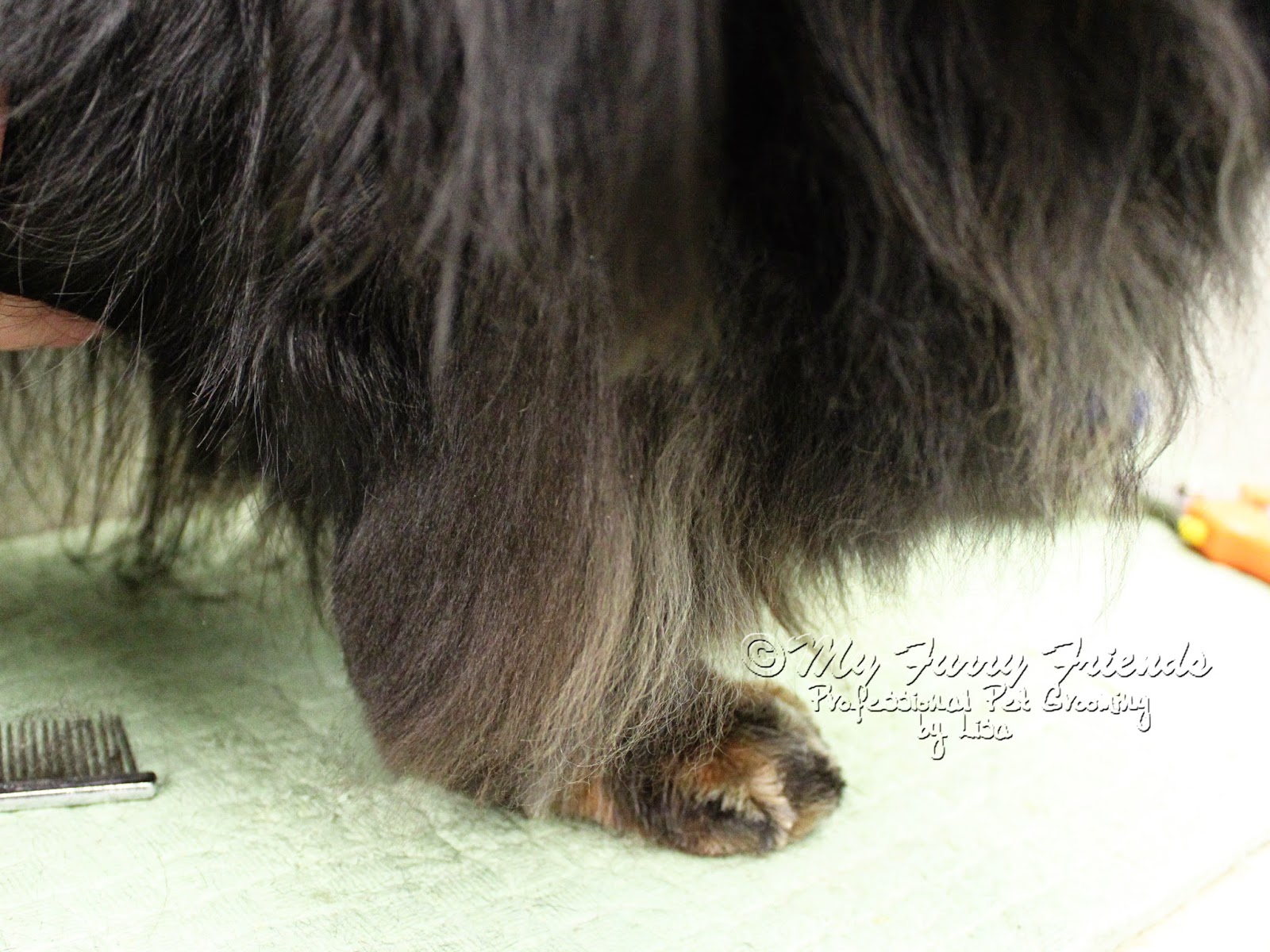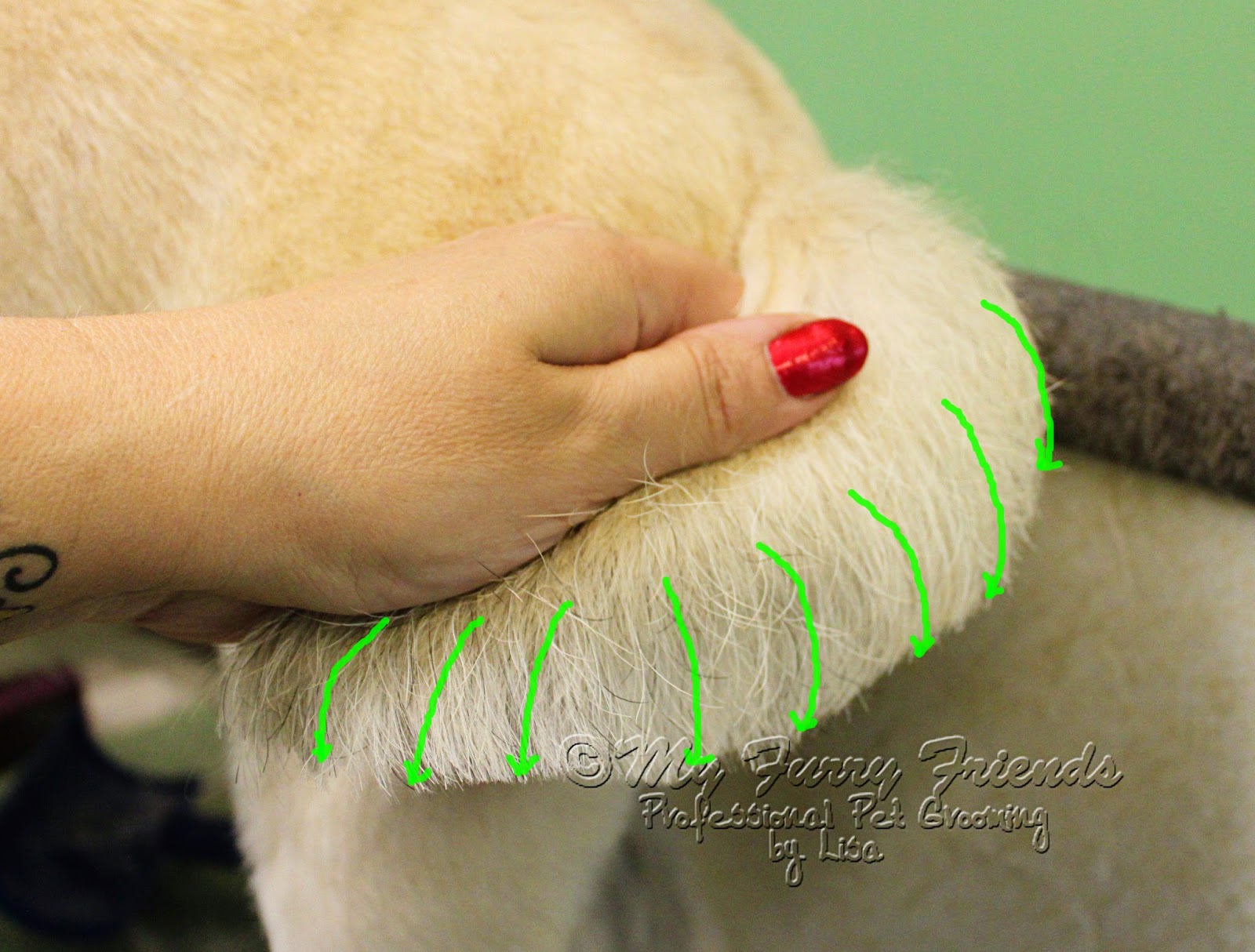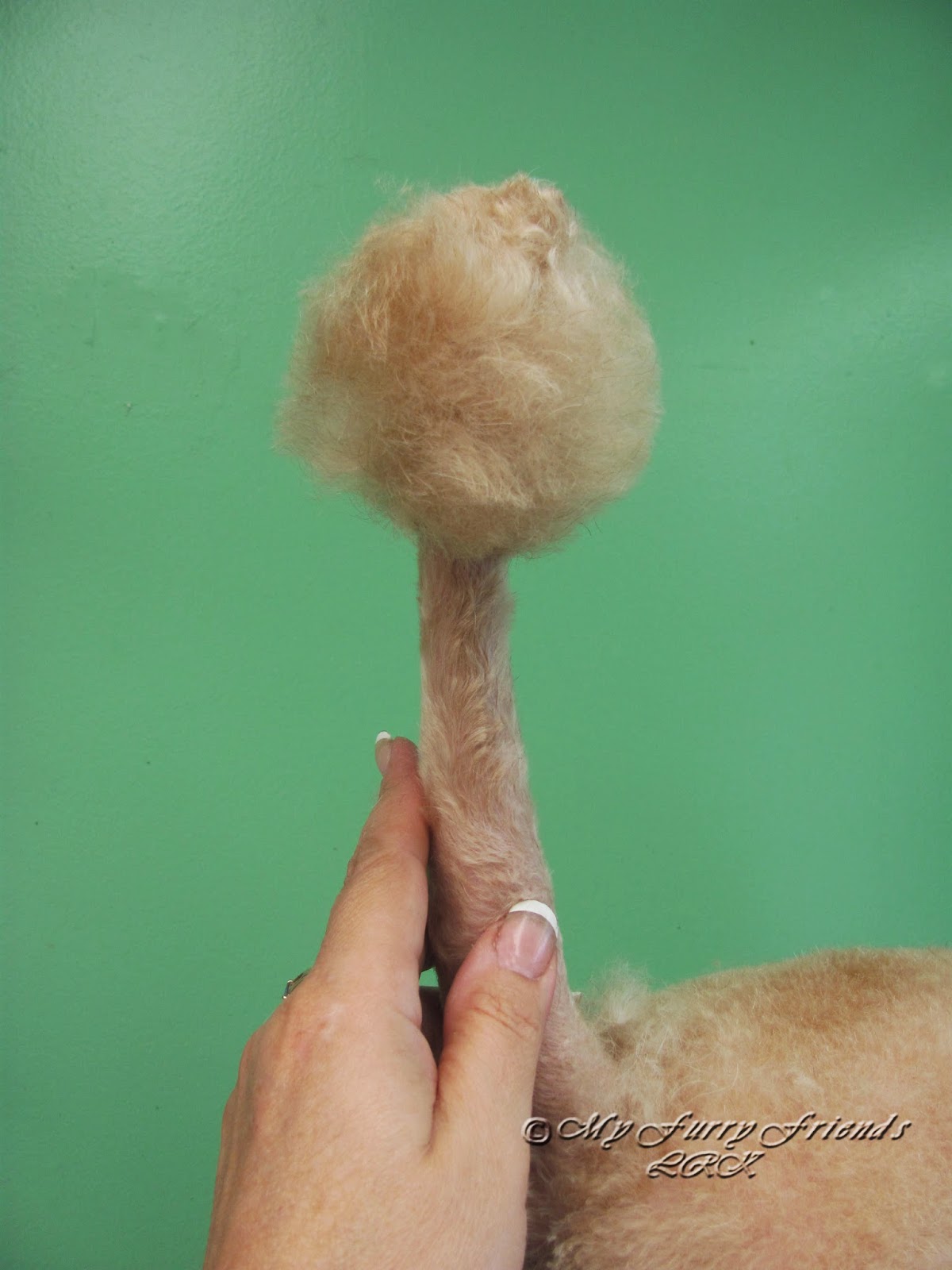....Customer Service!
Customer service is so important no matter whether you own your own grooming shop, or just work at one.
Good, and thoughtful customer service helps tremendously to grow your clientele.
Yes, I said "thoughtful".
Today I had an experience with good and bad (well not very good) customer service.
I got a call from my father this morning. (luckily I had taken off today)
He was pulled over on a side road with a flat tire.
Simple enough, right?
Go over change the tire to the spare doughnut tire, drive the car to a tire store, put new tire on, done.
Simple.
Maybe an hour out of my vacation day.
If only life were that simple.
Oh, he had a spare doughnut tire, and no problem jacking the car up, no problem getting the hubcap off, and the lug nuts were easy enough to loosen, there was just one problem....one of the lug nuts was special.
A special anti-theft lug nut that needed a special lug nut key to remove it.
There was also one other problem...my father had no idea where the lug nut key was.
So, I called the car dealership that my father bought the car from and got his repair work done.
I asked if the lug nut key was hidden in the car somewhere.
The mechanic told me to look in all of the places that I had already looked.
No lug nut key.
The only way to get that flat tire off was to have the car towed to the dealership to have the anti-theft lug nut cut off.
Really?
They don't have spare lug nut keys?
Anyway, the dealership gave me the number of a towing company.
I called.
They could come and tow the car to the dealership, but it would be a two and a half to three hour wait.
No problem, my fathers house was just 10 minutes away.
The towing company would call me when the tow driver was 10 minutes away so that I could be back at the car with the keys.
So, we locked up the car with a distress rag hanging out the window and the hazard lights on.
Two and a half hours went by with no call.
Then three hours went by with no call.
Three hours and ten minutes after my first call to the towing company, I called them again. (Believe me, I was thinking about how my own customers keep calling, checking on their dogs)
I was very nice and asked the same girl that I had talked to three hours earlier if she had any idea how much longer the wait might be.
After all, this was supposed to be a vacation day.
I was told that the tow driver assigned to my fathers car was just picking up another car.
My fathers car was next on the list.
The young lady on the phone told me that it would be another 45 minutes to an hour.
I waited 45 minutes.
Then an hour.
An hour and a half later I called the towing company again.
Again, I very pleasantly inquired as to how much longer the wait was going to be, and if the driver would still be coming, because right at that moment a sever thunder storm had rolled in.
Yes, I truly was being pleasant with the young lady, because I knew that she had no control on how long the driver would be, and I also knew that getting upset with her was not going to get me anywhere.
Sadly, the receptionist was getting annoyed with me.
She told me that the tow driver had just gotten off I95 and would be to my fathers car in a few minutes.
A few minutes turned into another 45 minutes.
Oh, and as for that 10 minutes heads up phone call that I was supposed to get when the driver was close.
The driver did call me....when he was a mile and a half away.
Luckily I had already gone back to my fathers car an hour earlier.
Thankfully the rain had stopped by the time the tow driver pulled up.
From the moment the tow drivers feet touched the road, he started to apologize for the long wait.
A truly heart felt apology, not a robotic, 'I have to say sorry to these people' type of apology.
I instantly cut him off and told him not to worry about it.
I told him I was sure that, because it was the first day after a Holiday, they were very busy.
As he loaded my fathers car I made small talk with him.
The tow driver, who had been on the job since 5:30am, (it was now 6:45pm) and still had six more cars to pick up, was on the clock until midnight.
This overworked man still had a good attitude and a smile on his face.
He was very pleasant to talk to.
He had the car loaded on his truck in no time.
Even with all of the pissed off drivers passing us, that were annoyed that they had go up the wrong side of the road to get past him while he worked.
I had left my house at 11am.
My vacation day was shot.
All those hours of sitting around and waiting.
If the young lady from the towing company had been more truthful about the time we had to wait, I could have gotten some other things done instead of staying close by so that I could be back at my fathers car in a few minutes notice.
Of course I understand that she could not give me an exact time.
Just like grooming dogs, I am sure that a tow driver can run in to different situations that could back him up.
But, I also believe that the receptionist could have given a little more accurate time estimate.
So, what is the point of this story, and what does it have to do with groomers and customer service?
Two things.
One: As groomers, everyday we have to give estimated times to pet owners as to when their dogs will be finished.
At our shop, we are pretty good about having the dogs finished at the time out we promised.
Unfortunately, there are times that we run behind.
When that happens, we make a point to call the owner well ahead of the time promised out, to let them know that we are running behind, and what the new estimated time out is.
I will even add 10 to15 minutes to the estimated time out just in case the pet owner has a habit of walking in early.
Would it have really been so hard for that young lady from the towing company to give me a call back and let me know that the tow driver was running so far behind.
She did not give me a wrong estimated time of arrival just once, but three times.
If you want to upset a customer, get complaints, and even possibly lose that customer, don't bother to give them a heads up.
Let them walk in at the time you thought and find their dog unfinished.
Let them get upset that they wasted a trip and now have to leave and come back later.
They may just never come back to have you groom their dog again.
It is just common courtesy to call a customer and let them know that you are running behind.
Put yourself in the pet owners shoes.
I understand that not all pet owners will be understanding, but I have found that most of them are very appreciative that we called them.
My second point: The driver.
What a wonderful attitude he had.
He had already been working 13 hours.
He still had around 5 more hours to go.
I am sure that at least one or two other customers had given him a hard time about their waits.
Yet he still had a smile on his face, and his apology to me had been sincere.
I read a lot of stories on groomers groups.
So many of these stories are filled with groomers talking about nasty encounters with their customers.
Yes, I have had a few nasty encounters with customers over the years, but I can honestly say that it is not a common occurance.
I could count those encounters on one hand.
I admit, I could have definitely had many more bad encounters with customers who walked in with bad attitudes, but I have always made a point to keep a smile on my face, stay calm, and talk to the customer, not at them.
I like the challenge of turning a grumpy customer into a smiling customer by the time they leave my shop.
A smile truly does get you so much farther in life (and grooming) than a frown and bad attitude, both with the dogs and their owners.
Always shot for excellent customer service and see your business grow!




































































